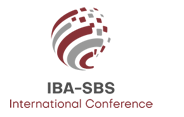Financing attitude of Islamic vs. Conventional banking institutions towards SMEs in Pakistan
Abstract/Description
This study examines the attitude of banks’ financing towards Small & Medium Enterprises (SMEs) in Pakistan. The study further aims to assess if there is any difference between the lending attitude of Islamic and conventional banking institutions. The data is collected from the State Bank of Pakistan website and regression analysis is applied to contrast the attitude of Islamic and conventional banking institutions in Pakistan towards SMEs financing. The evidence suggests that the Islamic banking institutions are more inclined towards financing SMEs as compared to their conventional counterparts, however, overall, the results are weakly significant at 10% level.
Keywords
Commercial Banks, Islamic Banking Institutions, Lending Attitude, Small and Medium Sized Enterprises(SMEs), State Bank of Pakistan, Central Bank
Track
Accounting, Law, and Finance
Session Number/Theme
Session 1A: Islamic Finance
Session Chair
Dr. Irum Saba, Institute of Business Administration, Karachi
Session Discussant
Dr. Mohsin Zahid Khawaja; Dr. Mohsin Sadaqat; Madeeha Omer Lakhani; Nader Virk
Start Date/Time
23-6-2022 11:00 AM
End Date/Time
23-6-2022 11:20 AM
Location
Training Room 3, Marriott Hotel, Karachi
Recommended Citation
Sharif, S., & Baig, M. A. (2022). Financing attitude of Islamic vs. Conventional banking institutions towards SMEs in Pakistan. IBA SBS 4th International Conference 2025. Retrieved from https://ir.iba.edu.pk/sbsic/2022/program/1
COinS
Financing attitude of Islamic vs. Conventional banking institutions towards SMEs in Pakistan
Training Room 3, Marriott Hotel, Karachi
This study examines the attitude of banks’ financing towards Small & Medium Enterprises (SMEs) in Pakistan. The study further aims to assess if there is any difference between the lending attitude of Islamic and conventional banking institutions. The data is collected from the State Bank of Pakistan website and regression analysis is applied to contrast the attitude of Islamic and conventional banking institutions in Pakistan towards SMEs financing. The evidence suggests that the Islamic banking institutions are more inclined towards financing SMEs as compared to their conventional counterparts, however, overall, the results are weakly significant at 10% level.



